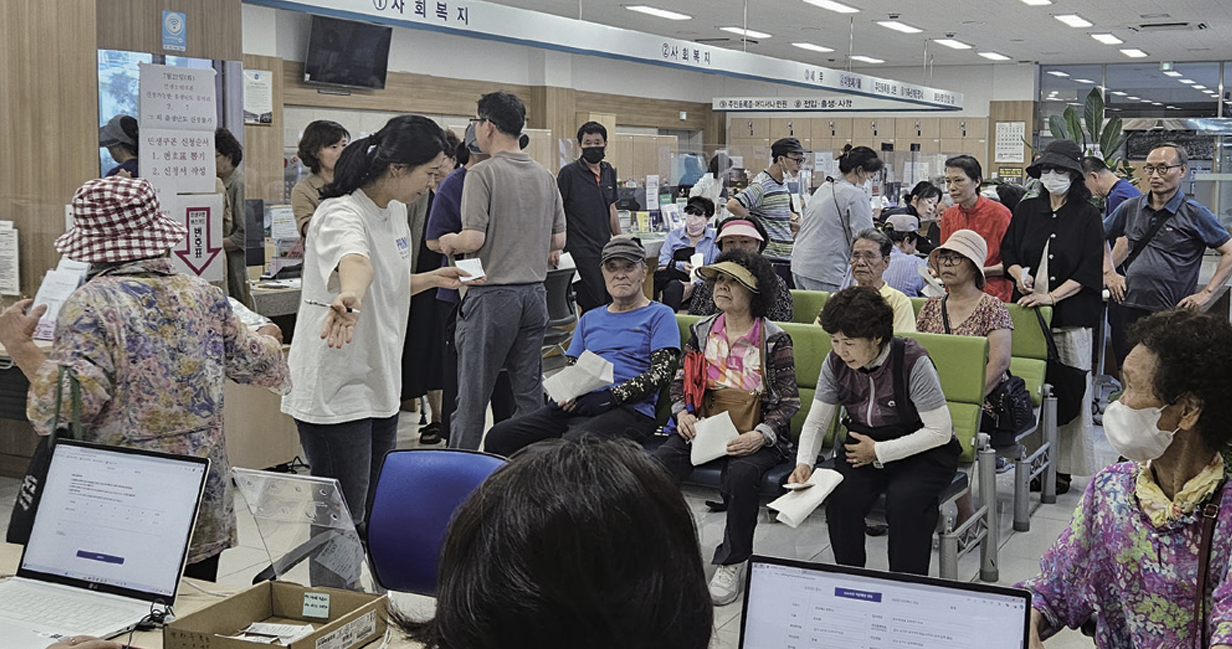On July 21st, the Lee Jae-myung administration launched the first round of the Livelihood Recovery Consumption Coupons, a nationwide initiative aimed at providing economic relief to all citizens. Despite its intended benefits, the policy has sparked mixed public reactions. Therefore, the Sungkyun Times (SKT) aims to explore the rationale behind these coupons, evaluate their practical impacts and associated controversies, and examine the potential direction of this policy moving forward.
Fighting for Economic Recovery
-Unlocking Consumption Coupons
The Livelihood Recovery Consumption Coupons are an economic policy initiated by President Lee Jae-myung and the ruling Democratic Party of Korea to stimulate consumer spending and boost revenues for small businesses and self-employed individuals. Recently, South Korea has been grappling with persistently sluggish domestic consumption due to sustained high inflation and rising interest rates. This ongoing economic stagnation has severely threatened the livelihoods of many self-employed individuals. According to the National Tax Service, the number of business closures among the self-employed surpassed one million for the first time in 2024. In response, the government allocated a total budget of ₩13.9 trillion to distribute Livelihood Recovery Consumption Coupons to all citizens.

Foreign residents registered in the Resident Registration System or enrolled in the National Health Insurance program are also eligible for this benefit. The coupons are distributed in two phases. During the first phase, running from July 21st to September 12th, citizens receive between ₩150,000 and ₩450,000, depending on their income category and area of residence. In the second phase, from September 22nd to October 31st, an additional ₩100,000 will be provided to all citizens, excluding those in the top 10% income bracket. Coupons must be used by November 30th at local stores within the recipient’s residential area that have annual revenues below ₩3 billion; any unused amount will expire automatically after this date. As a core policy of President Lee’s administration, the consumption coupons have drawn significant public attention.
-A Wave of Hope
The launch of the consumption coupons has been met with overwhelming public interest. According to the Ministry of the Interior and Safety, within just one week of the program’s rollout, 78.4% of eligible recipients had already applied. The coupons are beginning to breathe new life into both consumer activity and the small business sectors. Amid rising living costs and mounting expenses, many citizens had cut back on spending — but with the support of the coupons, consumer sentiment is beginning to recover. Shoppers are returning not only to essential goods stores and local markets but also to services like opticians and hair salons — businesses often avoided due to price concerns. To further ensure that this renewed spending directly benefits local economies, the coupons are not accepted at department stores, large foreign retail chains, or directly operated franchise stores. This deliberate restriction also addresses previous criticisms from the 2020 emergency relief program, when some recipients used their funds to purchase luxury items. As anticipation builds, many now look to the consumption coupons with hope for a meaningful boost to their local economies.
Where Relief Falls Short
-Economic Troubles Ahead
While the consumption coupons aim to support everyday citizens and revive local economies, growing concerns suggest they may carry long-term risks for South Korea’s broader fiscal health. A major point of criticism is the financial burden placed on the national budget. In a July survey conducted by research firm Embrain Trend Monitor, nearly 70% of 1,000 respondents cited increased strain on public finances as their top concern. Critics argue that although the coupons may stimulate short-term spending, they could undermine fiscal stability and pass on significant debt to future generations. These fears are underscored by the fact that much of the program’s funding, included in the second supplementary budget, comes from bond issuance — pushing national debt toward a historic high of over ₩1,300 trillion this year. Beyond fiscal concerns, doubts have also been raised about the policy’s actual economic impact. Some economists argue that coupon-driven consumption may be temporary, merely replacing existing spending rather than creating new demand — thus limiting its long-term economic impact. Others warn that the sudden injection of the expenditure could contribute to inflationary pressures, especially in sectors already facing rising prices. As discussions continue, the effectiveness and sustainability of the consumption coupons remain subjects of active public and expert debate.

-Gaps in the System
While the consumption coupons have been welcomed by many, the first phase of their distribution and use has revealed several practical challenges. A major concern involves regional equity. In places like Suncheon City, residents face severe demographic decline and aging yet receive less financial support than neighboring farming communities. This imbalance arises from Suncheon City’s administrative classification as a city, which excludes it from the government’s list of designated population-declining areas, despite its rural realities. Adding to this issue is the limited number of eligible stores in rural areas. Unlike cities, where consumers can use the consumption coupons at a variety of retail outlets, rural residents often have few options. In some communities, the local Nonghyup (NH) Hanaro Mart is the only available place to purchase daily necessities. However, the policy’s original rules allow coupon use only at a small number of select branches, fueling frustration among rural residents who feel excluded from the policy’s benefits. Beyond access issues, instances of misuse have also emerged. There have been repeated cases of individuals attempting to convert the consumption coupons into cash through online marketplaces or by reselling them to third parties — actions that undermine the program’s original intent. These loopholes undermine the initiative’s integrity and make it harder to ensure support reaches its intended recipients.
Policy That Lasts
-Beyond Quick Fixes
For the consumption coupons to deliver on their intended goal of revitalizing the economy, long-term follow-up measures are essential. Now that the initial funding has been allocated, the policy’s future depends on how well it is managed and adjusted. Experts caution that without a broader strategy, the coupons risk becoming a short-term fix rather than a sustainable solution. They emphasize the importance of establishing a stable tax base and advancing structural reforms across key industries to support long-term growth. Another critical step involves analyzing how the coupons were actually used during the first phase. By examining spending patterns across different sectors, the government could better tailor the second phase to maximize its impact. Post-analysis of Taiwan’s 2022 Taipei Bear Vouchers 2.0 — a similar stimulus program — revealed that the vouchers spurred new spending in sectors like culture and dining but largely replaced existing consumption in areas like sports. Based on this insight, Korean policymakers could identify industries that drove genuine new demand in the first round and adjust the scope or incentives of the second accordingly. Only with thoughtful, responsive design can the coupon program realize its potential as a true driver of recovery.
-Fairness on the Table
To maximize the effectiveness of the consumption coupons, the policy must prioritize not only economic impact but also user accessibility and public trust. A major challenge lies in ensuring that the benefits are distributed equitably across regions. This could be addressed by moving away from rigid administrative classifications and instead adopting flexible, needs-based criteria that reflect actual local conditions. In rural areas, where access to retailers is limited, expanding the range of eligible stores is critical. For example, as Democratic Party lawmaker Kim Moon-soo suggested in a July MBC interview, a practical compromise could involve allowing coupon use exclusively for fresh food purchases at NH Hanaro Mart. Ensuring fair and transparent implementation is also fundamental. Rather than relying solely on the government, a more effective approach would be to establish a multi-layered oversight system that includes citizen participation. By expanding access and refining operational systems, the program can better ensure that all citizens use the consumption coupons fairly and conveniently, reinforcing the value of the initiative.

Sometimes, the true impact of a policy is not fully reflected in numbers but in the everyday changes it brings about. While some may question the policy’s significance as an economic strategy, others might point to the quiet ways it has eased daily burdens, such as a long-postponed purchase finally made. Whether such moments are enough to justify the policy is ultimately a question for Kingos to consider.
